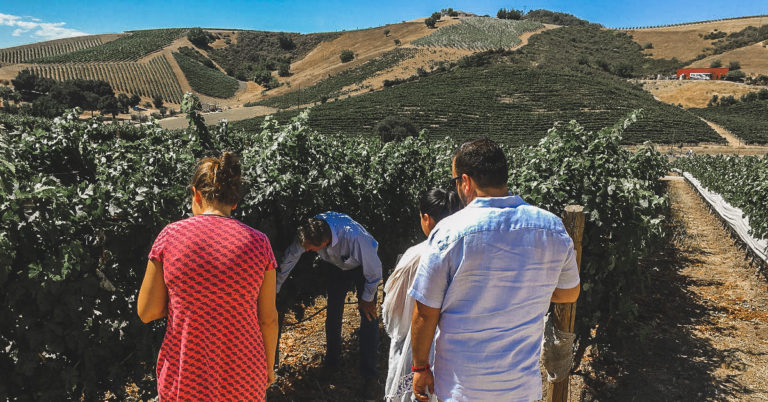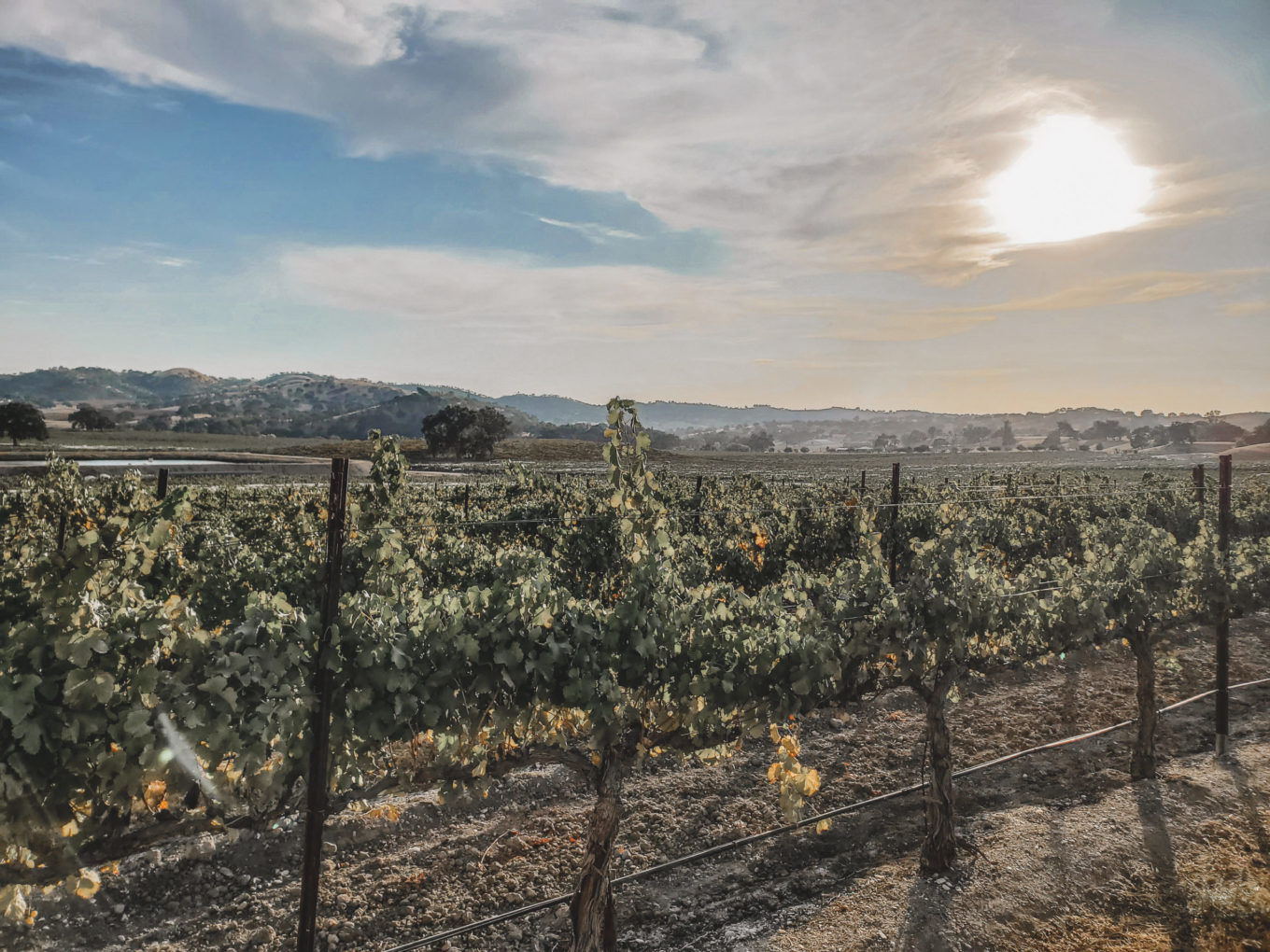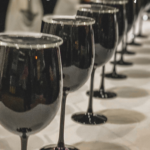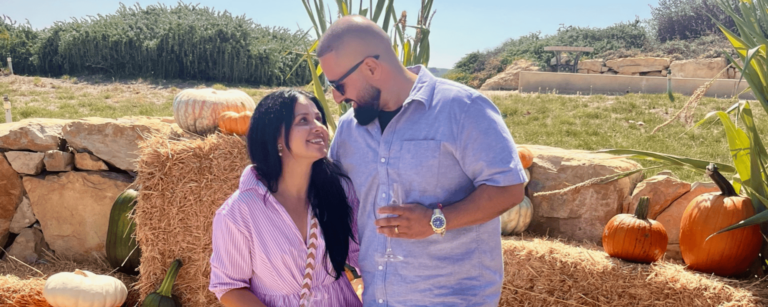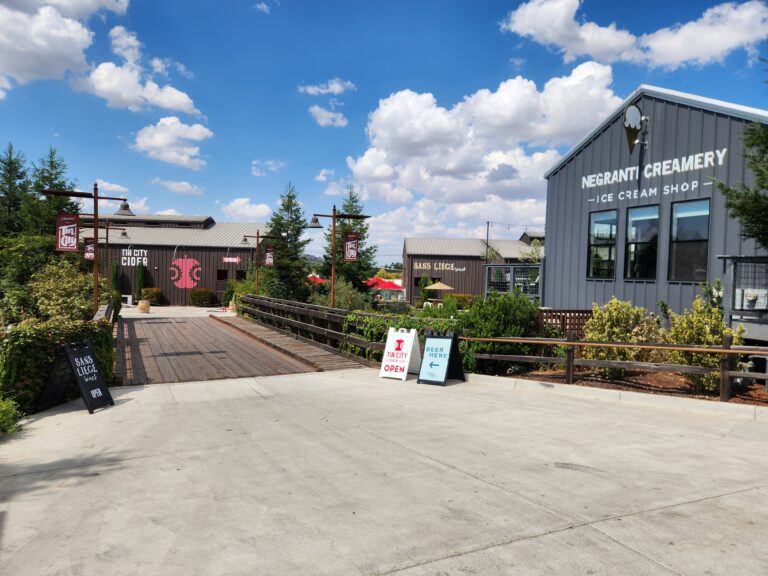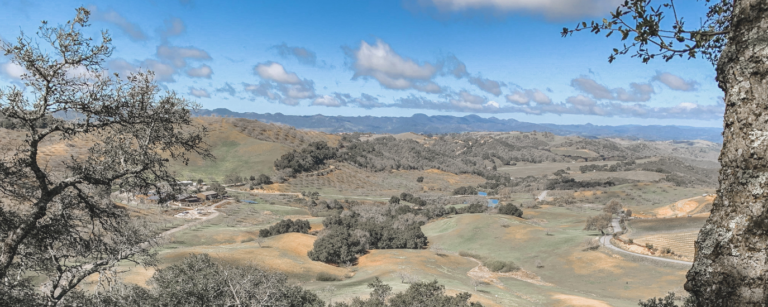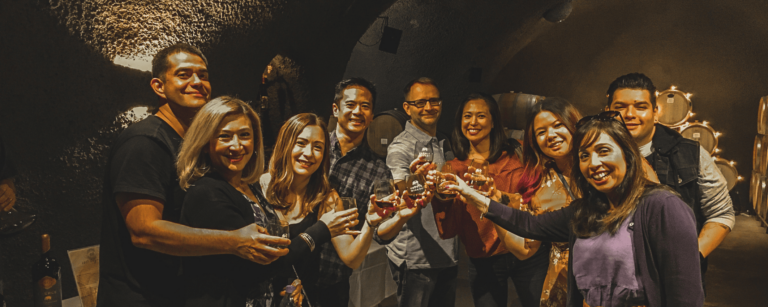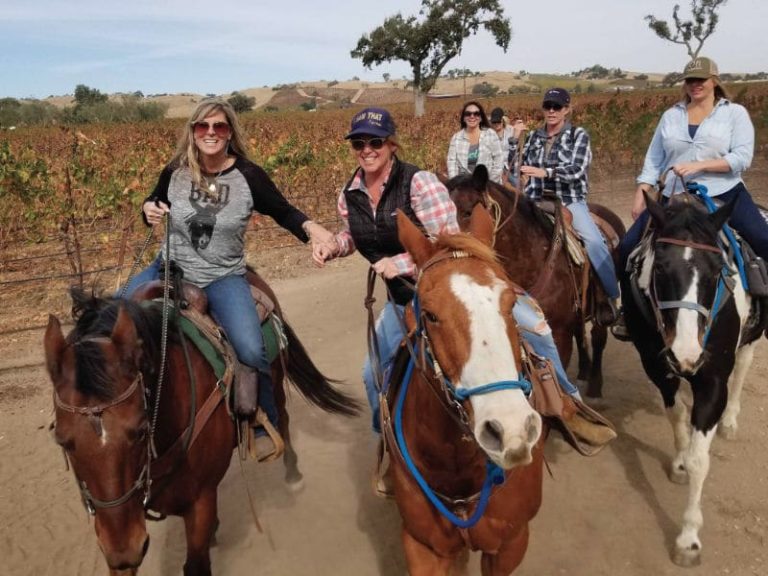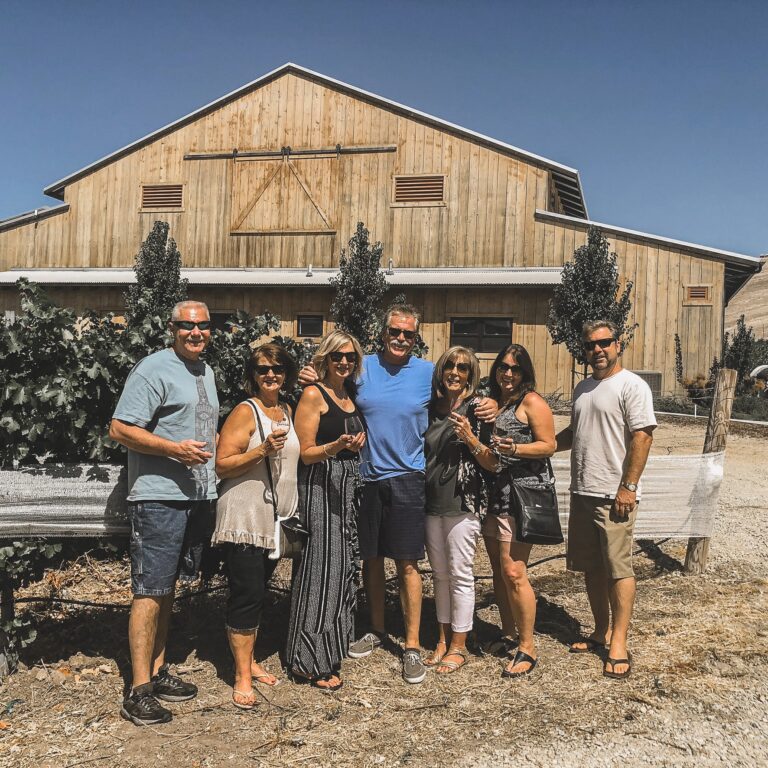Table of Contents
What’s the Difference Between Cheap & Expensive Wine?
You can avoid the grocery store stress by finding out what makes a wine expensive with our post below. You’ll learn all about what makes an expensive wine and the difference between cheap and expensive wine so you can impress any guest with a quality glass.
What makes a wine expensive?
There are a number of factors that determine the price of a bottle of wine, but the main ones are:
- farming & terroir
- supply and demand
- oak and aging
Farming & Terroir
Talk to any winemaker and you’ll hear them say great wine is made in the vineyard. Meaning it’s incredibly important how you farm and where you farm.
So a big part of your bottle price is real estate.
If the grapes were grown in a recognized quality wine region or reputable vineyard that’s recognized for producing well-balanced grapes and employing quality farming practices, that fruit is going to be more expensive.
Other factors such as whether the winery is purchasing all their fruit from other vineyards, or if they are growing their own fruit on their estate vineyard, whether the land has been in the family for generations or whether it’s still being paid off – all make a difference.
Besides the value of the land and how it’s being financed, another big factor is their farming practices. For fine wine, you want concentrated fruit with a perfect balance between sugar and acid.
You may have heard someone talk about ‘stressing the vine’. This is done to make the vine work harder to produce less, but higher quality, grapes.
You want the energy the vine is producing to go to fewer clusters, so you may drop fruit (cut off extra clusters of grapes), limit access to water (deficit irrigation), plant in difficult terrain, use high-density plantings, etc. All of this forces the vines to produce high-quality concentrated fruit instead of big juicy watered-down grapes. However, it does mean that winemakers are getting significantly less fruit than that vine is capable of producing.
In addition, they may pass through the vineyard more often to control the canopy, deal with pests and weeds to avoid using pesticides, and more.
To farm properly for quality wine is time, labor-intensive, costs more, and ultimately results in less overall fruit from the vineyard.
After harvest, most wineries are sorting the grapes to remove the MOG (Material Other than Grapes) as well as any undesirable grapes, which is mostly done by hand.
So ultimately you have higher costs for farming, labor, and land in order to produce quality fruit to make quality wine.
Often poorly farmed grapes from less-desirable regions employ tactics to make their wine ‘taste expensive’, such as adding flavorings, different acids for balance, and other additives that you may not consider desirable.
Supply and Demand
Supply and demand also play a role in the price of your bottle. Certain brands are more sought after than others and their production might be limited.
Besides brands, some varieties can also be more in demand than others. After Paul Giamatti’s Pinot Noir obsessed character in the movie “Sideways” exclaimed ‘I won’t drink any f*ing Merlot!’ – everybody stopped drinking Merlot and switched to Pinot Noir. After that, you could pick up an excellent Merlot for a very friendly price tag.
Also, Cabernet Sauvignon is considered king (despite being one of the easier grapes to farm), and since everyone loves a good Cab, the fruit and these bottles typically are more expensive just because they can be.
Oak Barrels
New oak barrels can be very expensive as well, so if a winemaker is using oak in their wine that will influence the price as well.
Oak is basically a winemaker’s spice rack. New oak gives off a lot of flavor, color, and oak tannin. The characteristics given (as well as the cost of the barrel) all depend on the type of oak, where it was grown and the toast level.
Neutral oak has been used multiple times and won’t give off any oak flavor, color, or tannin, but is still a great vessel to age a wine.
Barrels are mainly made from three species of white oak. The most commonly used:
- American Oak (Quercus Alba), grown in Virginia, Missouri, Minnesota, and Wisconsin
- French Oak (Quercus Petraea), grown in central France.
Depending on where the oak is grown and the toast level of the barrel, you’ll get different characteristics.
- American oak grows faster, is sweeter, and contains more vanillin compounds. American oak tends to impart more obvious, stronger, and sweeter aromas and flavors. Common descriptors for American oak are vanilla, coconut, sweet spice, and dill. Since American oak is denser it is sawn instead of hand-split. American oak is more affordable than French oak.
- French oak grows slower, has a tighter grain and is less dense. French oak imparts more subtle flavors and firmer, but silkier tannins. French oak flavors are considered to be more savory. Common descriptors for French oak include cedar, tobacco, and cashew nut.
Most French trees used for oak barrels are between 60 to 200 years old and one tree has just enough wood for one to three barrels.
After evaporation one barrel produces about 280 bottles. So you can see how using new barrels can drive up the price of a bottle.
Many inexpensive wines skip the use of barrels altogether and may steep oak chips in the wine or use oak/barrel flavorings instead, all of which will bring down the price, but also the quality.
Aging
Wine is alive and constantly changing. Time changes the taste of the fruit characteristics, the aromas, the color of the wine, and will soften out the tannins in red wines.
When wines are young, you get primary flavors, like fresh fruit. You may pick up some secondary notes associated with winemaking, such as vanilla from the oak or butter from the malolactic fermentation.
When wines age, you’ll start to pick up tertiary notes that come from development. More dried fruit characteristics and flavors that were hiding behind the primary notes, such as honey, herbal notes, mushroom, and earth.
Every time you open a bottle the wine will taste different and have a different texture.
Winemakers can age the wine in vessels like oak, acacia, concrete, amphora, stainless steel, or also in the bottle itself.
Not all wine improves with age. In fact, many white and rose wines should be enjoyed younger and while they’re still fresh. Wines that have a screw cap are often (though not always) considered wines that should be enjoyed now.
However, some wines will benefit from aging and some wineries will choose to hold on to them so that you know they were kept in the perfect conditions since wine needs to be stored in a temperature and humidity-controlled environment.
If the wine is being aged in a barrel, it will evaporate by about 2% per year, which will increase the cost because of how much wine they lose, and the cost of the barrel.
Aging wine in the bottle also requires increased storage space and expense to store it properly, which could be another factor in increased bottle price.
Can cheap wine be good?
Now we know what makes a wine expensive – how do they make cheap wine and can it be good?
There are many things you can do to decrease your costs from the beginning. Buying land or fruit from vineyards that aren’t considered high-quality and cost less is a start.
- You can also choose to highly irrigate the vines and use lots of pesticides & herbicides to increase the yield.
- After harvest, you can skip the sorting and throw all the grapes and MOG (ie leaves, small animals, rotten grapes, etc) into the fermenter to save cost.
These tactics aren’t going to get you quality juice, but there are a lot of tricks you can do in the winery to improve the taste & color of the wine.
Wine is supposedly just grapes and yeast, but there is a lot of chemistry that goes into modern-day wine-making.
Unlike food and medicines, alcoholic beverages in the US aren’t covered by the FDA. This means that winemakers aren’t required to disclose exactly what is in each bottle, all they have to reveal is the alcohol content and whether the wine has sulfites or certain food coloring additives.
Winemakers can pick from a long list of additives that can be used to tweak everything from color, and acidity to viscosity and more.
Additives aren’t necessarily bad, a lot of those additives are generally regarded as acceptable methods, for example adding commercial yeast, processes to add and remove tannins, adjusting the acidity, and adding sulfites and other preservatives to stabilize the wine, are all common and safe practices.
Also, if you’re worried about the sulfites in wine, you shouldn’t be. Products such as dried fruits, pre-packaged meats, cheeses, soups, sodas, etc all contain more sulfites than your cheap bottle of wine.
Wines can be mass-produced in huge steel vats, which hold hundreds of gallons and can be infused with oak chips and other additives. Every step of the fermentation process is closely monitored and can be altered by changing the temperature or adding more nutrients to the yeast.
This technology in the winery makes it possible to manipulate and perfect the flavor of the wine.
Mass-market wine often starts with a focus group of professional tasters targeting flavor profiles preferred by average consumers that will sell best in stores, restaurants etc. The winemaker then plays the scientist that creates the perfect wine to please the average palate.
It’s also why many mass-market wines taste the same regardless of vintage.
So no wonder that cheap wine tastes so good – but it’s up to you to decide whether it’s actually a quality wine you want to drink.
Can expensive wine be bad?
Wine is very personal. The only good wine is the wine that you like, so if you like a lighter style red then you may perceive an expensive big bold heavy red as “bad”.
Unfortunately. not all pricing reflects the cost of making the wine.
Marketing and perceived value play a big role as well. Even expensive red wines often have their color boosted with the use of “mega-red” or “mega-purple” juice from other grape varieties, or can employ some other less-than-ideal tactics. So price doesn’t always reflect quality.
For someone who is new to wine, how can they tell what is a good wine if not by the price?
Ideally, you would come out to wine country and try those small-batch wines that are crafted using the best grapes by passionate winemakers who don’t use artificial additives or tricks.
If you’re really looking to learn about quality wine & your palate, we recommend coming to Paso Robles.
We grow more than twice as many grape varieties than our friends up north in Napa, and the winemaking styles vary greatly amongst producers, so you can really get a sense for what appeals to you.
On top of that, many wineries are small, family-owned operations so you can frequently ask the winemakers directly about their winemaking and farming practices.
If you can’t make it out just yet, how can you pick that great bottle in the store? That’s not an easy question to answer.
- Once you’ve figured out what wine style and variety will fit the moment, try to choose a wine from a region where that variety grows well.
- Once you’ve determined that, you can google the producer and read more about their farming practices and size of production. It’s still a guess, but it may help you pick a better bottle.
- If possible, we recommend visiting a quality wine shop and explaining to the staff what it is you’re looking for, and hopefully, they should be able to help.
What is the best wine?
The best wine is the one that suits the moment, your mood, the weather, the food, and the one that is shared with others. Not all wine is made equally and maybe you don’t taste the difference between a cheap bottle of wine and an expensive bottle.
Tasting quality and complexity in a wine is something you learn as you learn more about wine and the more you taste. One day you will have that a-ha moment and suddenly that expensive bottle becomes memorable.
Salut!
